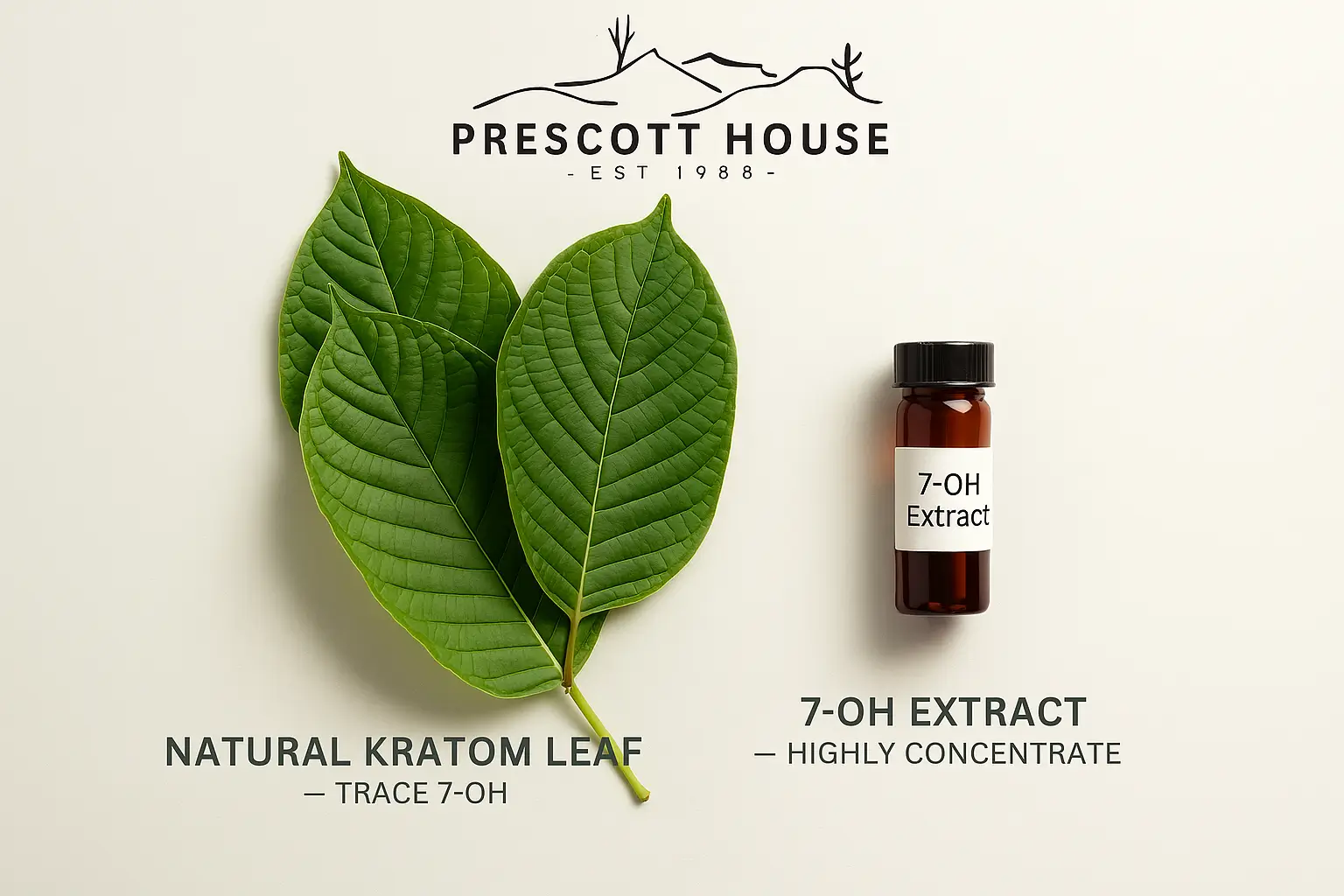Understanding Prescription Drug Abuse
Prescription drug abuse is a growing concern that affects individuals across various demographics. It is important to understand the definition of prescription drug abuse and the scope of the problem in order to address and combat this issue effectively.

Definition of Prescription Drug Abuse
Prescription drug abuse refers to the misuse or excessive use of prescription medications, whether they were prescribed for the individual or obtained through illicit means. This includes taking medication in higher doses or more frequently than prescribed, using medication for non-medical purposes, or using someone else's prescription medication.
Abusing prescription drugs can have serious consequences on an individual's health, relationships, and overall well-being. It is important to use prescription medications as directed by a healthcare professional to ensure their intended therapeutic effects and minimize potential risks.
Scope of the Problem
Prescription drug abuse has become a significant public health concern, with certain categories of drugs being more commonly misused. The most abused prescription drugs fall into three categories:
- Opioids for Pain Relief: Opioids, such as oxycodone and hydrocodone, are commonly prescribed to manage moderate to severe pain. However, they also carry a high risk of dependence and addiction. According to the Mayo Clinic, opioids are one of the most commonly abused prescription drugs.
- Central Nervous System Depressants: These medications, such as alprazolam and diazepam, are typically prescribed to treat anxiety disorders and sleep disorders. They work by slowing down brain activity, but their misuse can lead to sedation, respiratory depression, and addiction.
- Stimulants for ADHD and Narcolepsy: Stimulant medications like methylphenidate and amphetamine/dextroamphetamine are prescribed to manage attention deficit hyperactivity disorder (ADHD) and narcolepsy. However, they can be abused for their euphoric effects and increased alertness.
The scope of prescription drug abuse in the United States is alarming. Between 2000 and 2010, prescription drug abuse increased by nearly 100%, making it the nation's fastest-growing drug problem, according to the Trust for America's Health. Overdose deaths from prescription drugs also increased by 430% from 1999 to 2012, surpassing deaths caused by any other type of drug. In fact, prescription drug overdoses resulted in more deaths than heroin and cocaine combined in 2010.
It is estimated that nearly 6.1 million Americans abuse prescription drugs, as reported by the Trust for America's Health. The rise in prescription drug abuse highlights the need for effective prevention, intervention, and education initiatives to address this serious public health issue.
Most Abused Prescription Drugs
When discussing prescription drug abuse, it is important to identify the most commonly abused prescription drugs. These drugs typically fall into three categories: opioids for pain relief, central nervous system (CNS) depressants, and stimulants for attention deficit hyperactivity disorder (ADHD) and narcolepsy.
Opioids for Pain Relief
Opioids are powerful medications prescribed to manage severe pain. However, they are also commonly abused due to their potential for addiction and euphoric effects. Examples of commonly abused opioids include oxycodone and hydrocodone. These drugs can lead to physical and psychological dependence, and their misuse carries substantial health risks.
Central Nervous System Depressants
Central nervous system depressants, also known as sedatives or tranquilizers, are prescribed to treat anxiety, sleep disorders, and seizures. Abusing these drugs can induce feelings of relaxation and calmness, leading to their misuse. Examples of commonly abused CNS depressants include alprazolam and diazepam. Like opioids, these drugs can cause dependence and pose significant health risks when misused.
Stimulants for ADHD and Narcolepsy
Stimulant medications, such as methylphenidate and amphetamine/dextroamphetamine, are prescribed to manage conditions like ADHD and narcolepsy. Unfortunately, these drugs are also subject to abuse as individuals seek increased focus, energy, or weight loss. Stimulant abuse can have serious health consequences, including cardiovascular problems and psychological dependence.
To provide further insight, the following table illustrates the prevalence of illicit use among undergraduate students for each category of prescription drugs:

Table data sourced from source.
Understanding the most abused prescription drugs is essential in addressing the issue of prescription drug abuse. It is crucial to increase awareness, educate individuals about the risks associated with these drugs, and promote responsible use under proper medical supervision.
Statistics on Prescription Drug Abuse
Understanding the statistics surrounding prescription drug abuse is crucial in addressing this growing problem. The following section explores the increase in prescription drug abuse, the impact of overdose deaths, and the demographics of those affected.
Increase in Prescription Drug Abuse
Prescription drug abuse has seen a significant rise in recent years. In the United States, it increased by nearly 100% between 2000 and 2010, making it the nation's fastest-growing drug problem. This alarming increase highlights the urgent need for effective prevention and intervention strategies.
Overdose Deaths and Impact
The number of prescription drug overdose deaths has also seen a dramatic increase. From 1999 to 2012, these deaths rose by 430%, surpassing deaths caused by any other type of drug. Shockingly, in 2010, overdose deaths from prescription drugs exceeded the combined deaths caused by heroin and cocaine [4].
Overdoses from prescription painkillers specifically have more than quadrupled between 1999 and 2012, contributing significantly to the overall increase in overdose deaths. These statistics highlight the urgent need for improved prevention, education, and access to resources to combat the devastating impact of prescription drug abuse.
Demographics of Prescription Drug Abuse
Prescription drug abuse affects individuals across different age groups and demographics. According to the National Survey on Drug Use and Health, an estimated 36 million U.S. residents aged 12 and older abused prescription drugs at least once in their lifetime. Among those, 2.7 million individuals aged 12 to 17 and 6.9 million individuals aged 18 to 25 reported prescription drug abuse at least once in their lifetime.
Young adults aged 18 to 25 years have been shown to have the highest rates of lifetime, past-year, and past-month use of any illicit drug. When examining race and ethnicity, the 2003 National Survey on Drug Use and Health found that White young adults reported the highest prevalence of illicit drug use in the past year, followed by African-American and Hispanic young adults [5].
Furthermore, the 2004 National Survey on Drug Use and Health revealed that young adults aged 18 to 25 years had the highest prevalence of illicit use of prescription drugs. Among this age group, 11.9% used opioid analgesics, 3.7% used stimulant medication, 5.2% used tranquilizer medication, and 0.5% used sedative medication in the past year.
These statistics highlight the need for targeted prevention and education initiatives, particularly among young adults, to address the concerning prevalence of prescription drug abuse.
Understanding the statistics related to prescription drug abuse is essential in developing effective strategies to combat this growing issue. By raising awareness, implementing prevention programs, and providing resources, we can work towards reducing the prevalence and impact of prescription drug abuse in our communities.
Risks and Consequences of Prescription Drug Abuse
Prescription drug abuse can have serious health risks and consequences, affecting both the physical and mental well-being of individuals. Understanding these risks is crucial in raising awareness about the dangers associated with prescription drug misuse.
Health Risks and Side Effects
The misuse of prescription drugs, particularly opioids, central nervous system (CNS) depressants, and stimulants, can lead to a range of health risks and side effects. Opioid abuse, for example, can result in mood and behavior changes, difficulty thinking clearly, breathing problems, coma, or even death. The risks are heightened when opioids are combined with other substances like alcohol, antihistamines, and CNS depressants.
Misuse of CNS depressants can lead to drowsiness, lack of coordination, confusion, slurred speech, slowed breathing, and, in severe cases, seizures. Combining depressants with other medications or alcohol can slow the heart rate and breathing, potentially causing death [3].
Stimulant abuse, such as with certain ADHD drugs, can result in heart issues, seizures, panic attacks, paranoia, and aggressive behavior. The risks escalate when stimulants are mixed with other medications or substances, including over-the-counter cold medicines.
Addiction and Dependency
One significant risk associated with prescription drug abuse is addiction. Individuals can become addicted to prescription drugs as easily as if they were using illicit drugs. Addiction occurs when the brain becomes dependent on the drug, leading to compulsive drug-seeking behavior and the inability to control drug use.
To prevent addiction, doctors typically require in-person visits before renewing prescriptions to monitor patients for signs of dependency. It's essential for individuals to follow their healthcare provider's instructions carefully and never exceed the prescribed dosage or duration of use. Promptly seeking help if addiction is suspected is crucial for successful recovery.
Interactions with Other Substances
Prescription drug abuse becomes even riskier when combined with other substances. Mixing prescription drugs with alcohol, illicit drugs, or certain over-the-counter medications can have severe consequences. Combining opioids, CNS depressants, or stimulants with substances that have similar effects can lead to dangerous interactions, intensifying the sedative or stimulant effects and increasing the risk of overdose or other adverse reactions.
It's important to remember that even if a substance is legally prescribed, using it in a way not intended by a healthcare professional can be dangerous. Always consult with a healthcare provider and disclose any other medications or substances being used to ensure safe and appropriate treatment [3].
Understanding the risks and consequences of prescription drug abuse is vital in promoting responsible and safe medication use. It is crucial for individuals to respect the prescribed dosage, duration, and instructions provided by healthcare professionals to minimize the potential harm associated with prescription drug misuse.
Prevention and Intervention
To combat prescription drug abuse, various prevention and intervention strategies have been implemented. These measures aim to address the misuse of prescription drugs and promote safer practices. Here are three key approaches: prescription drug monitoring programs, abuse-deterrent formulations, and federal initiatives and guidelines.
Prescription Drug Monitoring Programs
Prescription drug monitoring programs (PDMPs) are state-run electronic databases that track the prescribing and dispensing of controlled prescription drugs. These programs provide healthcare professionals with access to patient prescription history, allowing them to identify potential issues with overprescribing, doctor shopping, or other suspicious activities. By monitoring and analyzing prescription data, PDMPs can help healthcare providers make informed decisions and prevent misuse of prescription drugs.
While the implementation of PDMPs has shown promising results in some states, challenges related to best practices, ease of use, and interoperability still exist. Nevertheless, PDMPs play a vital role in preventing and identifying prescription drug misuse and can contribute to reducing the rates of opioid prescribing and overdose.
Abuse-Deterrent Formulations
Abuse-deterrent formulations (ADF) of prescription drugs are designed to deter misuse by making it difficult to alter the drug's form for snorting or injecting. Medication manufacturers have developed ADF opioids and are also working on ADF stimulants. These formulations have been shown to reduce the illicit value of drugs and make them less attractive for non-medical use.
By incorporating technologies and techniques, such as physical barriers or chemical additives, ADFs help prevent the abuse of prescription drugs while maintaining their intended therapeutic effects. The availability of ADFs provides healthcare providers with an additional tool to mitigate the risk of prescription drug misuse.
Federal Initiatives and Guidelines
Recognizing the urgent need to address the opioid crisis and prescription drug abuse, the federal government has taken significant steps to implement initiatives and issue guidelines. For example, in 2015, the National Institutes of Health launched the Helping End Addiction Long-term (HEAL) Initiative to support research efforts focused on preventing opioid use disorders and reducing overdoses. Additionally, the Centers for Disease Control and Prevention (CDC) issued the CDC Guideline for Prescribing Opioids for Chronic Pain in 2016, providing evidence-based recommendations for healthcare providers to follow when prescribing these drugs [7].
These federal initiatives and guidelines are aimed at raising awareness, improving prescribing practices, enhancing patient education, and promoting comprehensive strategies to combat prescription drug abuse. By providing healthcare professionals and the public with evidence-based guidance, these efforts contribute to the prevention and reduction of prescription drug misuse and its associated consequences.
By implementing prescription drug monitoring programs, developing abuse-deterrent formulations, and implementing federal initiatives and guidelines, stakeholders can work together to prevent and address the issue of prescription drug abuse. These prevention and intervention strategies play a crucial role in safeguarding public health and promoting responsible use of prescription medications.
Obtaining and Sources of Prescription Drugs
Prescription drug abuse involves the misuse of medications that are prescribed by healthcare professionals. These medications can be obtained through various means, including illicit methods, diversion, and acquiring them from peers or family members.
Illicit Means of Obtaining Prescription Drugs
Illicit means of obtaining prescription drugs refer to acquiring them through unauthorized channels. This can involve unscrupulous pharmacists or medical professionals, doctor shopping, fraudulent prescription refills, altering prescriptions, and sometimes theft from pharmacies. These methods are illegal and can lead to serious consequences, both legally and health-wise.
Prescription Drug Diversion
Prescription drug diversion occurs when prescription drugs are transferred from legal to illegal channels of distribution or use. This can happen through theft, fraudulent prescriptions, or illegal sales. Individuals involved in prescription drug diversion exploit the system to obtain medications for non-medical purposes, contributing to the growing problem of prescription drug abuse.
Peer and Family Sources
Many individuals who misuse prescription drugs obtain them from friends or relatives, often without their knowledge or permission. According to a survey, approximately 70% of individuals who misuse prescription drugs acquired them from friends or relatives [8]. This can happen through various means, such as receiving medications for free, purchasing them, or even stealing them.
Data shows that approximately 32.8% of individuals who misused prescription pain relievers obtained them for free from a friend or relative. Moreover, in 2021, around 78.3% of individuals who misused prescription stimulants reported obtaining them from one doctor. Among adolescents aged 12 to 17, this percentage was even higher, at 88.5%.
It is essential to address the issue of obtaining prescription drugs from peers and family members. Proper education, awareness, and responsible medication management within households can help prevent the misuse and diversion of prescription drugs.
Understanding the sources of prescription drugs is crucial in combating prescription drug abuse. By implementing stricter regulations, promoting responsible prescribing practices, and educating individuals about the potential dangers associated with the misuse of prescription drugs, we can work towards reducing the availability and accessibility of these drugs for non-medical purposes.
Addressing Prescription Drug Abuse in College Settings
Prescription drug abuse is a significant concern among college students, and addressing this issue is crucial for promoting their health and well-being. In this section, we will explore the prevalence of prescription drug abuse among college students, the associated risk factors and demographics, and the prevention and education initiatives in place.
Prevalence Among College Students
Drug abuse, including the misuse of prescription drugs, is a prevalent issue among college students. According to a study published in PubMed Central, male college students generally reported higher rates of drug use and abuse compared to female students. Additionally, Hispanic and White students were more likely to report drug use and abuse compared to Asian and African American students prior to coming to college and during college.
Risk Factors and Demographics
Understanding the risk factors and demographics associated with prescription drug abuse among college students is essential for effective prevention strategies. According to the same study mentioned above, young adults aged 18 to 25 years, including college students, report the highest rates of lifetime, past-year, and past-month use of any illicit drug. Additionally, the study found that White young adults had higher rates of illicit drug use compared to African American and Hispanic young adults.
Prevention and Education Initiatives
To combat prescription drug abuse in college settings, various prevention and education initiatives have been implemented. These initiatives aim to raise awareness about the risks and consequences of prescription drug misuse, as well as promote safe and responsible behavior. Some common strategies include:
- Educational Programs: Colleges often provide educational programs that inform students about the dangers of prescription drug abuse and the importance of responsible medication use. These programs may include workshops, seminars, and awareness campaigns.
- Campus Policies: Many colleges have implemented strict policies regarding the possession and misuse of prescription drugs. These policies help create a drug-free environment and deter students from engaging in prescription drug abuse.
- Counseling Services: Counseling services are often available on college campuses to provide support and resources to students who may be struggling with substance abuse. These services can offer guidance, treatment options, and referrals to specialized professionals when needed.
- Peer Support Groups: Peer support groups create a sense of community and provide a safe space for students to discuss their challenges and seek support from their peers who may have similar experiences. These groups can serve as a valuable resource for those dealing with prescription drug abuse.
By implementing these prevention and education initiatives, colleges aim to reduce the prevalence of prescription drug abuse among their students and promote a healthier campus environment. It is essential for colleges to continue prioritizing these efforts and provide comprehensive support to students struggling with prescription drug abuse.
Most Abused Prescription Drugs
Prescription drug abuse is a growing concern, and understanding the most commonly abused prescription drugs is crucial in addressing this issue. The drugs that are most often misused can be categorized into three classes: opioids, central nervous system (CNS) depressants, and stimulants.
Opioids for Pain Relief
Opioids, commonly prescribed for pain relief, are among the most abused prescription drugs. These medications, such as oxycodone, hydrocodone, and codeine, can produce a sense of euphoria when misused. However, opioid abuse can have severe consequences, including addiction, mood and behavior changes, difficulty thinking clearly, breathing problems, coma, and even death. The risks associated with opioid abuse are heightened when opioids are combined with other substances like alcohol, antihistamines, and CNS depressants.
Central Nervous System Depressants
CNS depressants, including benzodiazepines (e.g., Xanax, Valium) and barbiturates, are another class of prescription drugs commonly misused. These medications are typically prescribed to treat anxiety, sleep disorders, and seizure disorders. However, when misused, they can result in drowsiness, lack of coordination, confusion, slurred speech, slowed breathing, and in severe cases, seizures. Combining CNS depressants with other medications or alcohol can further slow the heart rate and breathing, potentially leading to fatal consequences.
Stimulants for ADHD and Narcolepsy
Stimulant medications, primarily prescribed for attention deficit hyperactivity disorder (ADHD) and narcolepsy, are also prone to misuse. Examples include medications like Adderall and Ritalin. Stimulant abuse can lead to heart issues, seizures, panic attacks, paranoia, and aggressive behavior. The risks associated with stimulant abuse increase when these drugs are combined with other medications or substances, including over-the-counter cold medicines.
Understanding the risks and consequences of prescription drug abuse is essential in addressing this issue. Misuse of these drugs can result in health risks, addiction, and potentially life-threatening interactions with other substances. It is important to seek appropriate medical guidance and use prescription medications only as prescribed by a healthcare professional.
Please note that the prevalence of prescription drug abuse may vary among different demographics and populations. Factors such as gender, age, and educational settings can influence the rates of illicit use of prescription drugs. To combat prescription drug abuse, prevention efforts, education initiatives, and monitoring programs have been implemented to raise awareness, identify at-risk individuals, and promote responsible use of prescription medications.
References
[1]: https://www.mayoclinic.org/diseases-conditions/prescription-drug-abuse/
[2]: https://www.justice.gov/archive/ndic/pubs5/5140/index.htm
[3]: https://kidshealth.org/en/teens/prescription-drug-abuse.html
|[4]: https://www.tfah.org/releases/drugabuse2013/
[5]: https://www.ncbi.nlm.nih.gov/pmc/articles/PMC2377408/
[6]: https://www.ncbi.nlm.nih.gov/pmc/articles/PMC1876754/
[7]: https://nida.nih.gov/publications/research-reports/misuse-prescription-drugs/
[8]: https://www.drugabuse.gov/publications/research-reports/misuse-prescription-drugs/
[9]: https://www.samhsa.gov/data/sites/default/













